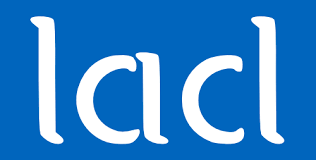March 21, 2022
Nathan Grosshans (Universität Kassel)One important research endeavour at the intersection of circuit complexity theory, algebraic automata theory and logic is the classification of regular languages according to their localisation within the internal structure of NC1, the class of languages decided by Boolean circuits of polynomial size, logarithmic depth and with gates of constant fan-in. In some sense, the search for such a classification concentrates most of the open questions we have about the relationship between NC1 and its well-studied subclasses.
While many questions are still open, one of the greatest successes of this research endeavour has been the characterisation of the regular languages in AC0, the subclass of NC1 corresponding to Boolean circuits of polynomial length, constant depth and with gates of unbounded fan-in. This characterisation takes the form of a triple languages-algebra-logic correspondence: a regular language is in AC0 if, and only if, its syntactic morphism is quasi-aperiodic if, and only if, it is definable in first-order logic over words with linear order and modular predicates.
It is natural to try to extend such results to classes of formal languages greater than the class of regular languages. A well studied and robust such class is given by visibly pushdown languages (VPLs): languages recognised by pushdown automata where the stack-height-behaviour only depends on the letters read from the input. Over the previous decade, a series of works concentrated on the fine complexity of VPLs, with several achievements: one of those was a characterisation of the class of visibly counter languages (basically VPLs recognised by visibly pushdown automata with only one stack symbol) in AC0 by Krebs, Lange and Ludwig. However, the characterisation of the VPLs in AC0 still remains open.
In this talk, I shall present a conjectural characterisation of the VPLs in AC0 obtained with Stefan Göller at the Universität Kassel. It is inspired by the conjectural characterisation given by Ludwig in his Ph.D. thesis as a generalisation of the characterisation for visibly counter languages, but that is actually false. In fact, we give a more precise general conjectural characterisation that builds upon recognisability by morphisms into Ext-algebras, an extension of recognisability by monoid-morphisms proposed by Czarnetzki, Krebs and Lange to suit the case of VPLs. This characterisation classifies the VPLs into three categories according to precise conditions on the Ext-algebra-morphisms that recognise them:
- those that are TC0-hard;
- those that are in AC0;
- those that correspond to a well-identified class of “intermediate languages” that we believe to be neither in AC0 nor TC0-hard.
